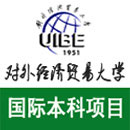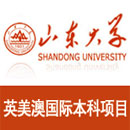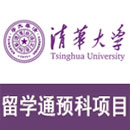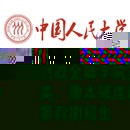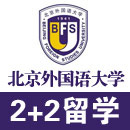the sensitive major list, to guide their eval2uation of visa submission.
Sorted by rate.
CRITICAL FIELDS LIST
-----------------------------
A. CONVENTIONAL MUNITIONS: Technologies associated with:
-- Warheads and other large caliber projectiles
-- Reactive armor and warhead defeat systems
-- Fusing and arming systems.
-- Electronic countermeasures and systems
-- New or novel explosives and formulations
-- Automated explosive detection methods and equipment
B. NUCLEAR TECHNOLOGY: Technologies associated with
production and use of nuclear material for both peaceful
and military applications. Included are technologies for:
-- Enrichment of fissile material
-- Reprocessing irradiated nuclear fuel to recover produced
plutonium
-- Production of heavy water for moderator material
-- Plutonium and tritium handling
Also, certain associated technologies related to nuclear
physics and/or nuclear engineering. Includes materials,
equipment or technology associated with:
-- Power reactors, breeder and production reactors
-- Fissile or special nuclear materials
-- Uranium enrichment, including gaseous diffusion,
centrifuge, aerodynamic, chemical, Electromagnetic
Isotopic Separation (EMIS), Laser Isotope Separation
(LIS)
-- Spent fuel reprocessing, plutonium, mixed oxide nuclear
research
Inertial Confinement Fusion (ICF)
-- Magnetic confinement fusion
-- Laser fusion, high power lasers, plasma,
-- Nuclear fuel fabrication including Mixed Oxide (uranium-
plutonium) fuels (MOX)
-- Heavy water production
-- Tritium production and use
-- Hardening technology
C. ROCKET SYSTEMS (including ballistic missile systems,
space launch vehicles and sounding rockets) and Unmanned
Air Vehicles (UAV) (including cruise missiles, target
drones, and reconnaissance drones): Technologies
associated with rocket systems and UAV systems. The
technology needed to develop a satellite launch vehicle is
virtually identical to that needed to build a ballistic
missile.
D. ROCKET SYSTEM AND UNMANNED AIR VEHICLE (UAV) SUBSYSTEMS:
Propulsion technologies include solid rocket motor stages,
and liquid propellant engines. Other critical subsystems
include re-entry vehicles, guidance sets, thrust vector
controls and warhead safing, arming and fusing. Many of
these technologies are dual-use. Technologies include:
-- Liquid and solid rocket propulsion systems
-- Missile propulsion and systems integration
-- Individual rocket stages or staging/separation mechanism
-- Aerospace thermal (such as superalloys) and high-
performance structures
-- Propulsion systems test facilities
E. NAVIGATION, AVIONICS AND FLIGHT CONTROL USEABLE IN
ROCKET SYSTEMS AND UNMANNED AIR VEHICLES (UAV): These
capabilities directly determine the delivery accuracy and
lethality of both unguided and guided weapons. The long-
term costs to design, build and apply these technologies
have been a limiting proliferation factor. Technologies
include those associated with:
-- Internal navigation systems
-- Tracking and terminal homing devices
-- Accelerometers and gyroscopes
-- Rocket and UAV and flight control systems.
-- Global Positioning System (GPS)
F. CHEMICAL, BIOTECHNOLOGY AND BIOMEDICAL ENGINEERING: The
technology used to produce chemical and biological weapons
is inherently dual-use. The same technologies that could
be applied to develop and produce chemical and biological
weapons are used widely by civilian research laboratories
and industry; these technologies are relatively common in
many countries. Advanced biotechnology has the potential
to support biological weapons research. In the biological
area, look for interest in technologies associated with:
-- Aerobiology (study of microorganisms found in the air or
in aerosol form)
-- Biochemistry
-- Pharmacology
-- Immunology
-- Virology
-- Bacteriology
-- Mycology
-- Microbiology
-- Growth and culturing of microorganisms
-- Pathology (study of diseases)
-- Toxicology
-- Study of toxins
-- Virulence factors
-- Genetic engineering, recombinant DNA technology
-- Identification of nucleic acid sequences associated with
pathogenecity
-- Freeze-drying (lyophilization)
-- Fermentation technology
-- Cross-filtration equipment
-- High "DOP-rated filters" (e.g., HEPA filters, ULPA
filters)
-- Microencapsulation
-- Aerosol sprayers and technology, aerosol and
aerosolization technology
-- Spray or drum drying technology
-- Milling equipment or technology intended for the
production of micron-sized particles
-- Technology for eliminating electrostatic charges of
small particles
-- Flight training
-- Crop-dusting, aerosol dissemination
-- Unmanned aerial vehicle (UAV) technology
-- Fuses, detonators, and other munitions technology
-- Submunitions technology
-- Computer modeling of dissemination or contagion
-- Chemical absorption (nuclear-biological-chemical (NBC)
protection)
In the chemical area, look for:
-- Organo-phosphate chemistry
-- Neurochemistry
-- Chemical engineering
-- Chemical separation technology
-- Pesticide production technology
-- Pharmaceutical production technology
-- Chemical separation technology
-- Toxicology
-- Pharmacology
-- Neurology
-- Immunology
-- Detection of toxic chemical aerosols
-- Chemical absorption (Nuclear-Biological-Chemical (NBC)
protection)
-- Production of glass-lined steel reactors/vessels, pipes,
flanges, and other equipment
-- Aerosol sprayers and technology
-- Flight training
-- Crop-dusting, aerosol dissemination
-- Unmanned Aerial Vehicle (UAV) technology
-- Fuses, detonators, and other munitions technology
-- Submunitions technology
-- Computer modeling of dissemination
G. REMOTE SENSING, IMAGING AND RECONNAISSANCE: Satellite
and aircraft remote sensing technologies are inherently
dual-use; increasingly sophisticated technologies can be
used for civilian imagery projects or for military and
intelligence reconnaissance activities. Drones and
remotely piloted vehicles also augment satellite
capabilities. Key-word associated technologies are:
-- Remote sensing satellites
-- High resolution multi-spectral, electro-optical and
radar
data/imagery
-- Imagery instruments, cameras, optics, and synthetic
aperture
radar systems
-- Ground receiving stations and data/image processing
systems
-- Photogrammetry
-- Imagery data and information products
-- Piloted aircraft
-- Unmanned Air Vehicles (UAV)
-- Remotely-piloted vehicles; and drones
H. ADVANCED COMPUTER/MICROELECTRONIC TECHNOLOGY: Advanced
computers and software play a useful (but not necessarily
critical) role in the development and deployment of
missiles and missile systems, and in the development and
production of nuclear weapons. Advanced computer
capabilities are also used in over-the-horizon targeting,
airborne early warning targeting, Electronic
Countermeasures (ECM) processors. These technologies are
associated with:
-- Supercomputing, hybrid computing
-- Speech processing/recognition systems
-- Neural networks
-- Data fusion
-- Quantum wells, resonant tunneling
-- Superconductivity
-- Advance optoelectronics
-- Acoustic wave devices,
-- Superconducting electron devices
-- Flash discharge type x-ray systems
-- Frequency synthesizers
-- Microcomp
本文章关键词:美国,国政,政府,府关,关于,于敏,敏感,感专,专业,业列,列表,表(,(英,英文
留学114为您提供更多出国留学,国内留学预科更多信息www.liuxue114.com





